 Title
|
Saving Communities
|
|||||||||||||||||||||||||||||||||||||||||||||||||||||||||||||||||||||||||||||||||||||||||||||||||||||||||||||||||||||||||||||||||||||||||||||||||||||||||||||||||||||||||||||||||||||||||||||||||||||||||||||||||||||||||||||||||||||||||||||||||||||||||||||||||||||||||||||||||||||||||||||||||||||||||||||||||||||||||||||||||||||||||||||||||||||||||||||||||||||
Home |
Site Map |
Index
|
New Pages |
Contacts |
 |
Ricardo’s Law of Rent
|
Ricardo’s Principles of Political Economy was inspired by Adam Smith’s Wealth of Nations, which he sometimes criticized and sometimes elaborated upon. His treatment of rent was inspired by Smith’s chapter, “Of the Rent of Land,” and particularly by this quote:
“The rent of land, therefore, considered as the price paid for the use of the land, is naturally a monopoly price. It is not at all proportioned to what the landlord may have laid out upon the improvement of the land, or to what he can afford to take; but to what the farmer can afford to give.”
Ricardo noted that this was true of rent in Europe, where all the land was thoroughly monopolized, but that it was not true of rent in America, where there were vast amounts of land open for settlement. In such a situation, people would take up the best land first, and have no rent to pay. Rent would slowly arise as the best land was taken up and people had to resort to poorer land. He agreed with Smith that land value was not wealth in the Wealth of Nations sense.
I have already expressed my opinion on this subject in treating of rent, and have now only further to add, that rent is a creation of value, as I understand that word, but not a creation of wealth… that is to say, the necessaries, conveniences, and enjoyments of the society.
He also favorably quoted Jean-Baptiste Say for noting that,
“The earth... is not the only agent of nature which has a productive power; but it is the only one, or nearly so, that one set of men take to themselves to the exclusion of others; and of which, consequently, they can appropriate the benefits. The waters of rivers, and of the sea, by the power which they have of giving movement to our machines, carrying our boats, nourishing our fish, have also a productive power; the wind which turns our mills, and even the heat of the sun, work for us; but happily no one has yet been able to say, the ‘wind and the sun are mine, and the service which they render must be paid for.’”
Getting back to the question of how rent arises, Ricardo notes,
On the first settling of a country in which there is an abundance of rich and fertile land, a very small proportion of which is required to be cultivated for the support of the actual population, or indeed can be cultivated with the capital which the population can command, there will be no rent; for no one would pay for the use of land when there was an abundant quantity not yet appropriated, and, therefore, at the disposal of whosoever might choose to cultivate it.
To illustrate this, let us assume four grades of land. On the best land (green), a typical farmer can get four units of wealth with the same effort that would only get him three units on the second-best grade (yellow), two units on the third-best (tan), and only one unit on the poorest land (maroon). Naturally, the first farmer will take up the best land, and will have no rent to pay. Other farmers will do the same, until there is no more first-grade land.
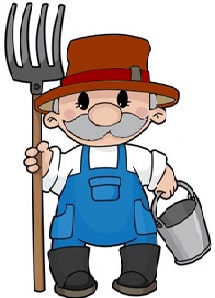 |
|||
| Yield:
4 |
Yield
3 |
Yield
2 |
Yield 1 |
| Rent:
0 |
|||
| Wages:4 |
At that point, Ricardo notes that they will start taking up second-best land, which has a lower yield.
It is only, then, because land is not unlimited in quantity and uniform in quality, and because, in the progress of population, land of an inferior quality, or less advantageously situated, is called into cultivation, that rent is ever paid for the use of it [the best land]. When, in the progress of society, land of the second degree of fertility is taken into cultivation, rent immediately commences on that of the first quality, and the amount of that rent will depend on the difference in the quality of these two portions of land.
At this point, the natural wage goes down to 3, and the rental
value of the best land becomes 1.
   |

|
||
| Yield:
4 |
Yield:
3 |
Yield
2 |
Yield 1 |
| Rent:
1 |
Rent:
0 |
||
| Wages:3 |
Wages:
3 |
Landlords can also drive up rents by holding land out of use. Holding some of the best land idle forces new settlers to resort to second-best land sooner than they would have had to naturally. This drives down wages and drives up rents. In the illustration below, everyone would have access to the best land for free if not for some land being held out of use. In Europe, feudal lords did this through the Enclosure Acts. In North America, it was done by politically connected speculators grabbing up land they could not use, and sometimes by people homesteading one parcel just long enough to qualify for ownership and then homesteading another. Artificially high rents caused by holding land out of use is called “rack rents.”
 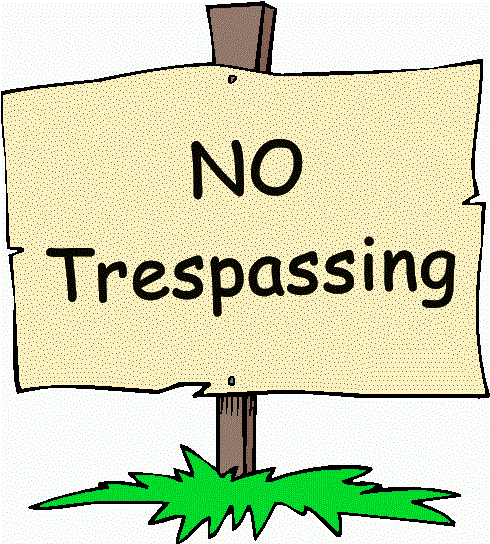  |

|
||
| Yield:
4 |
Yield:
3 |
Yield
2 |
Yield 1 |
| Rent:
1 |
Rent:
0 |
||
| Wages:3 |
Wages:
3 |
When land of the third quality is taken into cultivation, rent immediately commences on the second, and it is regulated as before by the difference in their productive powers. At the same time, the rent of the first quality will rise, for that must always be above the rent of the second by the difference between the produce which they yield with a given quantity of capital and labour. With every step in the progress of population, which shall oblige a country to have recourse to land of a worse quality, to enable it to raise its supply of food, rent, on all the more fertile land, will rise.
— David Ricardo
Again, not all the better land is “taken into cultivation,”
but it is all claimed. The more land is taken up, even if it is not
actually put to use, the more rents rise and wages fall.
   |
  
|
 
|
|
| Yield:
4 |
Yield:
3 |
Yield
2 |
Yield 1 |
| Rent:
2 |
Rent: 1 |
Rent: 0 | |
| Wages: 2 |
Wages:
2 |
Wages: 2 |
Finally, when farmers are pushed down to the worst land that is capable of sustaining life (the maroon colored land on the chart), base wages are pushed down to a bare minium, and everything else is rent.
   |
  
|
  
|

|
| Yield:
4 |
Yield:
3 |
Yield
2 |
Yield: 1 |
| Rent: 3 |
Rent: 2 |
Rent: 1 | Rent: 0 |
| Wages: 1 |
Wages: 1 |
Wages: 1 | Wages:1 |
The problem of land monopoly would be obvious enough if the workers all had the same
ability, but that is not the case. Some workers are more productive
and some less. Consider a farmer whose skills get him twice the yield
on any given land that the average farmer gets, and another who only
gets half they yield of an average farmer. In the beginning, when the
best land is available to all, the best farmer will get twice the wage
of the average farmer, and four times the wage of the worst farmer.
However, even the worst farmer produces twice what he needs to
survive:
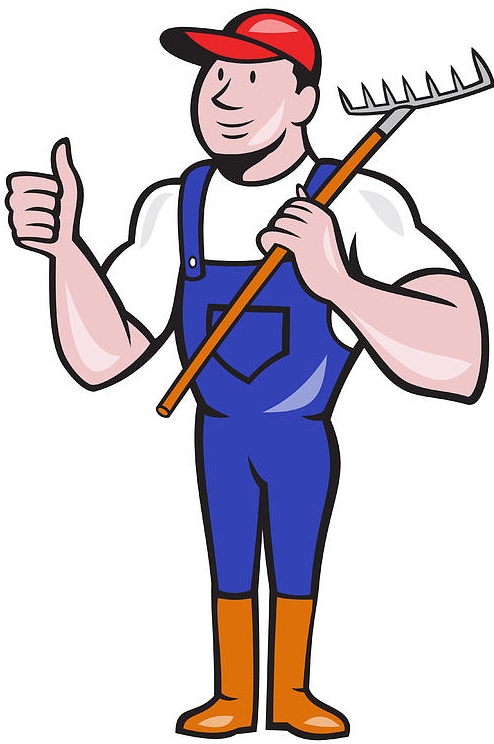 |

|
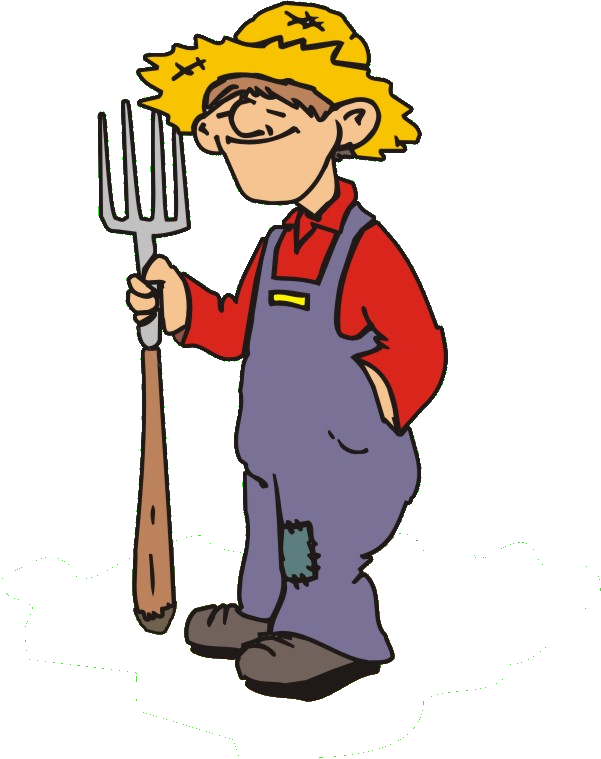
|
|
| Yield:
4x2=8 |
Yield: 4x1=4 |
Yield 4x½=2 |
|
| Rent: 0 |
Rent: 0 |
Rent: 0 | |
| Wages: 8 |
Wages: 4 |
Wages: 2 |
|
However, once rent rise to monopoly levels, the best farmer can stil pay the highest rent and have more wages left over, while
the worst farmer loses money by renting better land. He gets no wage at all on anything but the worst, most rent-free land.
   |
  
|
  
|
  
|
| Yield:
4x2=8 4x1=4 4x½=2 |
Yield: 3x2=6 3x1=3 3x½=1½ |
Yield
2x2=4 2x1=2 2x½=1 |
Yield: 1x2=2 1x1=1 1x½=½ |
| Rent: 3 |
Rent: 2 |
Rent: 1 | Rent: 0 |
| Wages: 5,1,-1 |
Wages: 4,1,-½ | Wages: 3,1,0 | Wages:2,1,½ |
A
poor farmer who inherited the best land could still make a
decent living, as he would have no rent to pay. However, he would get
more from renting out the best land to a superior farmer than from
working
the land himself. As a result, the best farmers tend to end up on the
best land, and the worst farmers on the worst land. The separate
competition between the best farmers also affects rents. Where superior
farmers only have to out-bid
average farmers, the rent of that
land is not affected. However, once average farmers are driven off the
best land, as in the chart below, superior farmers must bid against other superior farmers,
and rent on the best land is further increased.
   |
  
|
  
|
 
|
| Yield:
8 |
Yield: 6,3 |
Yield
2 |
Yield: 1, ½ |
| Rent: 3 up to 4 |
Rent: 2 |
Rent: 1 | Rent: 0 |
| Wages: 5 down to 4 |
Wages: 4,1 |
Wages: 1 | Wages:1, ½ |
Originally, when everyone had access to the best land rent-free, the superior farmer was getting twice what he is getting now. Still, he was only getting twice what the average farmer got and four times what the worst farmer got. Even though he is getting half as much now as he got then, he is now getting four times what the average farmer gets and eight times what the worst farmer gets, even if he has to pay rent.
But the differential gets worse. Let us introduce simple capital in
the form of a plow. The plow can also double the yield for the same
amount of labor. The plow maker could sell plows for one unit of wealth
and still survive, but he doesn’t have to, just yet, if he is the only
plow-maker. He can increase the yield of the superior farmer on the best land by eight, so he can charge 8 for his first plow.
    |
  
|
  
|
 
|
| Yield:
16,8 |
Yield: 6,3 |
Yield:
2 |
Yield: 1, ½ |
| Plow Cost:8 |
|
||
| Rent:4 |
Rent: 2 | Rent: 1 | Rent: 0 |
| Wages: 4 |
Wages: 4,1 |
Wages: 1 | Wages:1, ½ |
However, his high wage for making plows will attract other
plow makers who will compete on price. As the price of plows comes
down, all the superior farmers on superior land will start using plows.
But will their wages increase? Maybe for a little while, but the
prospect of higher wages will drive up rents, and the landlords will
absorb the gain until the wages going to superior farmers returns to
four.
    
|
  
|
  
|
 
|
| Yield:
16 |
Yield: 6,3 |
Yield:
2 |
Yield: 1, ½ |
| Plow Cost: 8 down to 7 |
|
||
| Rent: 4 up to 5 |
Rent: 2 | Rent: 1 | Rent: 0 |
| Wages: still 4 |
Wages: 4,1 |
Wages: 1 | Wages:1, ½ |
When the cost of plows falls all the way to two, all the
farmers on the second-best land and some of the farmers on the
third-best land will use them, the productivity difference between the
second and third best land doubles, and the rent increases to absorb
it.
    
|
    
|
    |
 
|
| Yield:
16 |
Yield: 12,6 |
Yield:
4,2 |
Yield: 1, ½ |
| Plow Cost: 2 |
Plow Cost: 2 | Plow Cost: 2 | |
| Rent: 7 | Rent: 3 up from 2 | Rent: 1 | Rent: 0 |
| Wages: 7 |
Wages: 7,1 |
Wages: 1 | Wages:1, ½ |
We showed four distinct qualities of land and three distinct qualities of farmer to simplify demonstrating the principle. In reality, there are unlimited gradations of land quality and farmer quality. The principle still applies, however. Every increase in population and every advance in technology increases competition for land and drives up rent.
If we focus only on the disparity between the best and worst
farmers, we might think the injustice is in the best farmer getting
seven times what the average farmer gets, and 14 times what the worst
farmer gets. This is partly because the best farmer is on the most
productive land, partly because he has access to capital that the worst
farmer does not have, and partly because he is, after all, a much
better farmer. If he also owns the land he is working and is paying
rent to himself, he is getting 28 times what the worst farmer gets.
This is what Marxists and other anti-capitalists focus on, but the
the classical liberals and early progressives asked, where is all that
rent going? The answer is that much of it goes to private landlords who may or
may not also be farmers. As farmers, they are wealth producers, but landlords, as Adam Smith noted, “reap where they never sowed.” What if we share the rent on a per capita
basis? Based on our example, we get the following results:
| Sharing the Rent of Land in Use |
|
| 2 farmers on best land: |
2x7=14 |
| 2 farmers on second-best land |
2x3=6 |
| 2 farmers on third-best land |
2x1=2 |
| 2 farmers on poorest land |
zero |
| Total rent |
22 |
| Number of farmers |
8 |
| Rent share per farmer |
22÷8=2¾ |
    
|
    
|
    |
 
|
| Yield:
16 |
Yield: 12,6 |
Yield:
4,2 |
Yield: 1, ½ |
| Plow Cost: 2 |
Plow Cost: 2 | Plow Cost: 2 | |
| Rent: 7 | Rent: 3 up from 2 | Rent: 1 | Rent: 0 |
| Wages: 7 |
Wages: 7,1 |
Wages: 1 | Wages:1, ½ |
| Rent Share: 2¾ |
Rent Share: 2¾ | Rent Share: 2¾ | Rent Share: 2¾ |
| Total: 9¾ | Total: 9¾, 3¾ | Total: 3¾ | Total, 3¾, 3 |
In
this scenario, the best farmers are only getting 3¼ times as much as
the
worst farmers, which is about the same ratio as when everyone had
access to the best land. More importantly, the worst farmer is now
getting three times what he needs to survive, while he had been getting
only half what he needed to survive. But what about the land
that is being held out of use for speculation? Shouldn’t they pay rent,
too? What would that do to the rent shares?
| Total Land Rent with Vacant Lots |
|
| 2 farmers on best land: |
2x7=14 |
| 1 best parcel held idle |
1x7=7 |
| 2 farmers on second-best land |
2x3=6 |
| 1 second-best parcel held idle | 1x3=3 |
| 2 farmers on third-best land |
2x1=2 |
| 1 third-best parcel held idle | 1x2=2 |
| 2 farmers on poorest land |
zero |
| Total rent |
34 |
| Number of farmers |
8 |
| Rent share per farmer |
34÷8=4¼ |
    
|
    
|
    |
 
|
| Yield:
16 |
Yield: 12,6 |
Yield:
4,2 |
Yield: 1, ½ |
| Plow Cost: 2 |
Plow Cost: 2 | Plow Cost: 2 | |
| Rent: 7 | Rent: 3 up from 2 | Rent: 1 | Rent: 0 |
| Wages: 7 |
Wages: 7,1 |
Wages: 1 | Wages:1, ½ |
| Rent Share: 4¼ |
Rent Share: 4¼ | Rent Share: 4¼ | Rent Share: 4¼ |
| Total: 11¼ | Total: 11¼, 5¼ | Total: 5¼ | Total, 5¼, 4¾ |
Now the rent share is much larger. However, those people holding prime land idle were only doing so because it imposed little or no cost on them. As the tax on the rental value of their land is gradually increased, they will let go of that land. Without prime land being held idle, there is no need for anyone to resort to the poorest land. That means the rent goes down for everyone. The third best land no longer pays any rent, because nobody has to use the poorest land at all. Rent shares will be lower, but wages will be higher.
| Total Rent when Vacant Lots Disappear |
|
| Farmers |
Rent |
| 3 farmers on best land: |
3x4=12 |
| 3 farmers on second-best land |
3x2=6 |
| 2 farmers on third-best land |
zero |
| Total rent |
18 |
| Number of farmers |
8 |
| Rent share per farmer |
18÷8=2½ |
     
|
     
|
  
|
|
| Yield:
4x2x2=16 |
Yield: 3x1x2=6 |
Yield:
2x1x2=4, 2x½=1 |
Yield: 1 |
| Plow Cost: 2 |
Plow Cost: 2 | Plow Cost: 2 | |
| Rent: 4 | Rent: 2 | Rent: 0 | |
| Wages: 10 |
Wages: 2 |
Wages: 2, 1 | |
| Rent Share: 2½ |
Rent Share: 2½ | Rent Share: 2½ | |
| Total: 12½ | Total: 4½ | Total: 4½, 3½ |
Now the rent share is lower, but wages are higher,
and total return to the worker is higher. Even the poorest worker is
getting more than he got when he had access to the best land rent-free.
It’s also important that total productivity is higher. There is just as
much land out of use
as before, but now it is the least productive land that is out of use.
Giving the people access to the most productive land increases the
productivity of the whole economy, and sharing the rent gives the
benefit of higher productivity to everyone.
| Productivity Without Rent Sharing |
|
| 2 farmers on best land: |
2x16=32 |
| 1 best parcel held idle |
0 |
| 2 farmers on second-best land |
12+6=18 |
| 1 second-best parcel held idle | 0 |
| 2 farmers on third-best land |
4+2=6 |
| 1 third-best parcel held idle | 0 |
| 2 farmers on poorest land |
1+½=1½ |
| Total productivity |
57½ |
| Productivity With Rent Sharing |
|
| 3 farmers on best land: |
3x16=48 |
| 3 farmers on second-best land |
3x6=18 |
| 2 farmers on third-best land |
4+1=5 |
| 0 farmers on poorest land |
0 |
| Total productivity |
71 |
This answers the objection that people want to make the poor richer by making the rich poorer. Rent sharing makes all wealth producers richer by making the economy more productive.
This means that a rent-sharing program can be gradually
introduced at any level of government, national, provincial, county or
municipal. It can even be incorporated into a for-profit land trust.
We used farming as an example because it is simple. However, per capita rents are higher in suburbs than on farms, and higher still in cities. The highest rents of all are in central business districts (CBDs). Thus a square yard of prime Manhattan land is worth more than an acre of New York State farmland, and 25% of Pittsburgh’s taxable land value is in its “Golden Triangle,” which occupies only 1% of the land. Those CBD rents are also the most monopolized by large corporate interests. Taxing land values and sharing the rents would not only enrich the productive people of the taxing district, but would spur the development of idle and grossly underused land like this vacant tract in Pittsburgh, which is across from its city hall and in the midst of skyscrapers. Taxing this land would cause it to be put to a better use and would increase productivity:
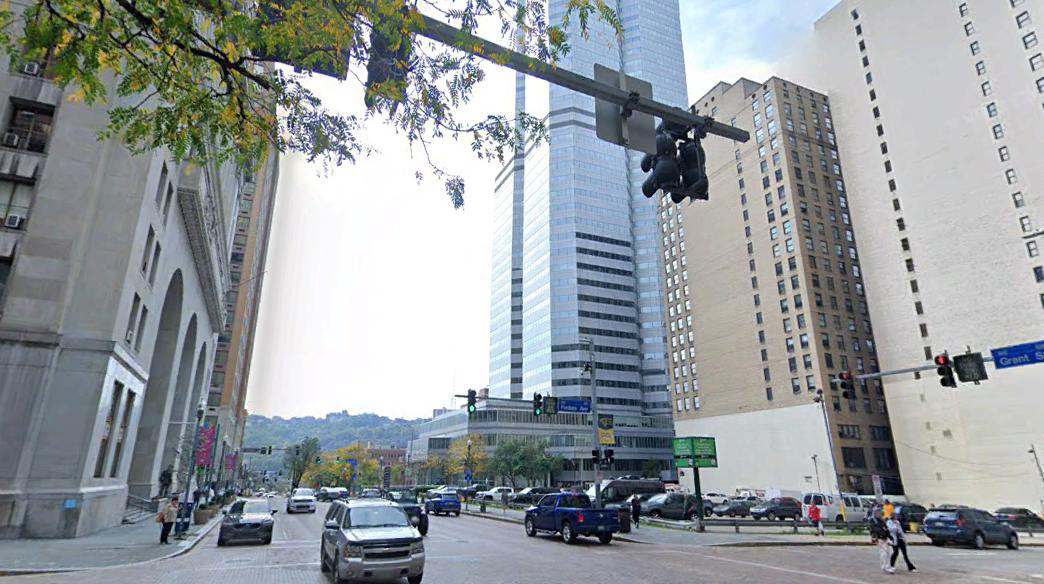
Indeed, wherever land value tax has been implemented, it has led to increased construction and economic growth. This was recognized in the Fortune article, “Higher Taxes that Promote Development.” While funding a per capita dividend with other taxes might hurt economic vitality, doing so with a land value tax would clearly increase it.
So far, we have been looking at the economic aspects of rent sharing. The moral aspects are just as compelling.
Saving Communities
420 29th Street
McKeesport, PA 15132
United States
412.OUR.LAND
412.687.5263